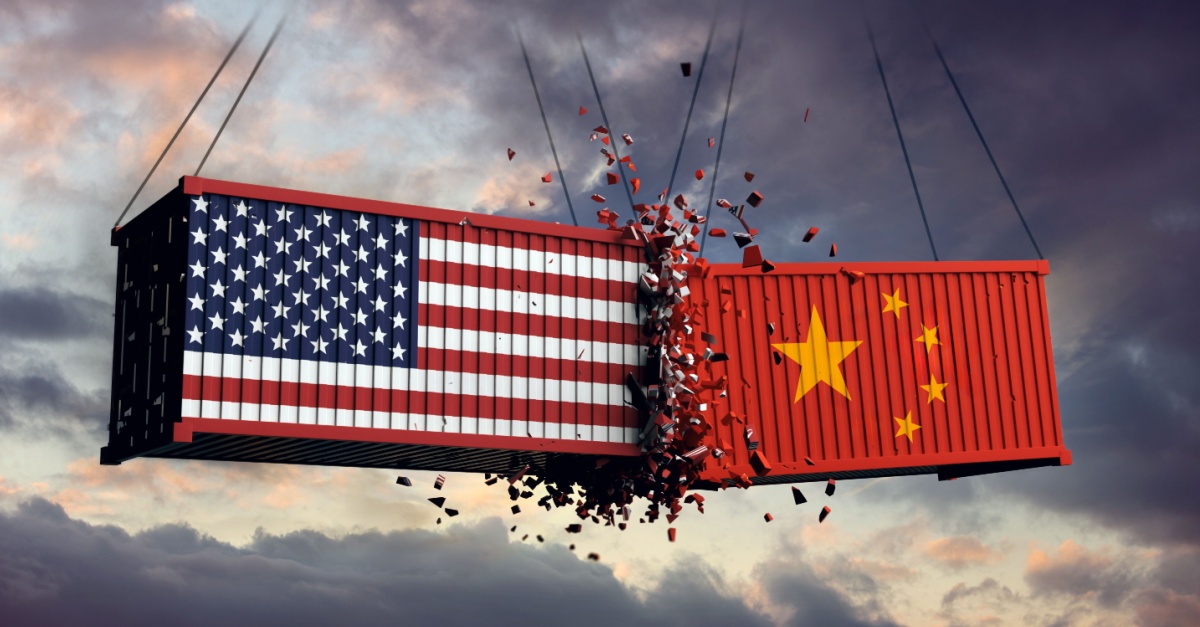
The tariff war escalation with China is reshaping global supply chains with alarming speed. From record-high duties on Chinese imports, now potentially reaching up to 245%, to sweeping fees on Chinese-built ships, U.S. trade policy is driving up costs and shifting logistics priorities across industries.
Container rates are volatile, manufacturing is repositioning, and companies like Prologis are seeing a surge in U.S. warehouse demand as importers stockpile inventory. Meanwhile, trade with Mexico is under pressure as the U.S. ends a key tomato pact. We unpack the ripple effects across freight, sourcing, and storage in this issue of the Zengistics newsletter.
Tariffs on Chinese imports to the U.S. could reach a staggering 245%, the White House said April 15, as the trade standoff between Washington and Beijing deepens. The figure includes a 125% reciprocal tariff, a 20% levy linked to the fentanyl crisis, and Section 301 duties ranging from 7.5% to 100% on specific items.
The Trump administration tied the move to national security concerns over dependence on rare earth minerals, following China’s April 4 restrictions on exports of the materials vital to semiconductors and electric vehicle (EV) batteries. China, America’s third-largest trade partner with $582 billion in bilateral commerce in 2024, has responded with retaliatory tariffs of 125% on U.S. goods.
While the U.S. imports a broad range of consumer electronics, furniture, and industrial products from China, its key exports, including oil, gas, agro products, and pharma, now face higher barriers. Trump has signaled that further tariffs on semiconductor imports are coming.
Trade policy swings are battering container shipping, with President Trump’s escalating tariff campaign triggering demand shocks, blank sailings, and rate surges across Asia-U.S. lanes. On April 2, the White House imposed reciprocal tariffs on 60 nations, then paused them a week later for most, excluding China.
Electronics, including smartphones and semiconductors, received a late exemption, adding further complexity. The Freightos Baltic Index reported a 10% jump in Asia-U.S. West Coast rates and a 3% rise to the East Coast for the week ending April 11. However, rates out of Shanghai fell 16% post-tariff, while those in Taiwan and Vietnam remained steady, which could signal a possible realignment of manufacturing.
Following a joint investigation by the Biden-Trump administration that found China’s state-backed policies “burden or restrict U.S. commerce” and undercut domestic shipbuilders, container ships built in China and calling at U.S. ports will face escalating annual fees. The new rule will take effect October 14, and the yearly fees could increase to $140 per net ton by 2028, or approximately $250 per container.
Car carriers face a starting fee of $150 per car equivalent unit. LNG carriers will be subject to future restrictions that will be phased in over a period of two decades. However, public backlash led to revisions of the original fee structure, which initially proposed charges per port call of up to $1.5 million, resulting in a per-voyage model. Despite these changes, the plan still targets 98% of global trade vessels, which are expected to be Chinese-built, signaling a high-stakes push to revive domestic shipbuilding capacity.
The U.S. Commerce Department will terminate a long-standing tomato trade agreement with Mexico, reinstating a 20.91% tariff on Mexican-grown tomatoes starting July 14. The suspension agreement had set minimum pricing for Mexican tomatoes, allowing them to enter duty-free while avoiding antidumping investigations. Mexico exports 99% of its tomatoes to the U.S., accounting for $2.7 billion in 2023.
The Florida Tomato Exchange, which has long opposed the agreement, called the move “a major victory for American agriculture.” Its executive VP, Robert Guenther, claimed the agreement allowed unfair competition to damage U.S. growers for decades. Most tomato imports enter the United States through Texas and Arizona, particularly via the World Trade Bridge in Laredo and the Nogales port.
Prologis, the world’s largest industrial real estate firm, says the growing trade war is triggering a spike in demand for U.S. warehouse space as companies rush to stockpile goods near consumers. Retailers and logistics giants, such as Amazon, FedEx, and Home Depot, are securing overflow storage and rerouting shipments ahead of Trump’s tariff increases.
CEO Hamid Moghadam said the company thrives by staying close to consumption. “We’re not good at predicting tariffs or labor costs, but we are very good at predicting consumption,” he told The Wall Street Journal. The warehousing sector, which saw vacancy rates rise to 7% in Q1 2025 from 5.7% the previous year, is now experiencing renewed leasing activity. Prologis posted $592 million in Q1 earnings, with revenue up 9.2% to $2.14 billion, beating analyst expectations.
Logistics can be quite complex and confusing in some cases. But does it have to be? At Zengistics, we prioritize shippers’ peace of mind above all else. We focus on delivering the highest level of customer service, providing data-driven solutions, practicing proactive communication, and maximizing efficiency to drive scalable growth and deliver personalized solutions that optimize your supply chain nationwide.
Sound like what you’re looking for? At Zengistics, we leverage technology to ensure that and more. We offer:
Zengistics is the smarter option for getting logistics done more efficiently. Connect with us today.